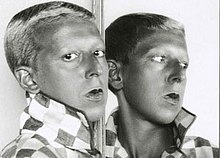By: Amanpreet Pall
This class has taught us all so much: gender, class, sexism and what women have dealt with and continue to deal with in the art world. It shows strength and perseverance of one gender throughout history emerging into a revolution. A movement where women can be seen as equal to men, especially where art lies. Of course equality is not present yet, but hopefully one day, within our generation it will be. One should not be judged by their genitalia but by their character and in this case their artwork. One set of women that most particularly stick out to me are the ones who I find the most bold. Ones whose work is the exact opposite of the status quo and a bit unnerving to those who have "old-school" values. Meaning where women should be painted as angels, in domestic settings or near pretty little flowers. Beautiful as that may be, paintings or sculptures of taboo are very intriguing. Such as the sexual sculptures of Camille Claudel, or the moving paintings of Artemisia Gentileschi, the puzzling photographs of Claude Cahun, the cross dressing of Rosa Bonheur and the introduction of animal painting, and finally the eye-opening photographs of Dorothea Lounge.
The Newark Museum had two excellent exhibitions, "Angels and Tomboys" and "In her Eyes". Learned how the smallest symbols such as a piece of fruit, certain parting of the hair can be feminine and a hammer or the stance of a child can be masculine. In most of the paintings of young children, it was difficult at first glance to see which one was female and male. Yet the dead-giveaways were how the female would be leaning on something, whereas the male would stand tall and strong. Why was that necessary? To make a male strong and a female needing to lean on something which would be portrayed intentionally to make her seem weaker than her male counterpart. The boy would hold a leaf next to his Adam's Apple and the girl would hold a flower near her womb to signify fertility. For the "In her Eyes" exhibition the women in the photographs were either fully clothed or partially exposed. At times cross dressing or wearing masculine clothing to hide their true identity as a woman.
 |
| Richmond, Californina, 1942 Gelatin silver enlargement print on cardstock |
 |
| Rosa Bonheur "The Horse Fair" 1887 |
Another example of a strong woman who did not follow the norm of her time was Rosa Bonheur. Luckily her father was a part of Utopian society and believed in gender equality. Next, Rosa obtained a license for cross-dressing from the French government. Bonheur had a life partner, female to be exact, not a fiance or even a husband. One quote that she is known for is, "I have no patience for women who ask for permission to think" (Guerrilla Girls 48). What a strong statement. During a time where men had more power than they do today she was able to stand out by the way she spoke, dressed, but most of all the way she painted. She also hunted, smoked cigars and rode her horse throughout the streets of Paris. One painting that truly sticks out is the one to the right. This piece of art is a true masterpiece and one of her most noted works.
 |
| Artemisia Gentileschi "Judith Slaying Holofernes" 1620 |
Artemisia Gentileschi is probably one of the most brilliant woman who has ever lived. Her father was an artist, his apprentice unfortunately raped Artemisia and she had the courage to speak against him and go to trial. What had happened was that the rapist promised to marry her to save her reputation, he did not fulfill his promise. Later on she set up her own Atelier and learned how to read and write as well. One piece of art which is so moving because even though it is of "Judith Slaying Holofernes" it reminds the spectator of Artemisia killing her rapist.

Camille Claudel is another woman artist who is known for her erotic sculptures and tumultuous love affair with sculptor Auguste Rodin. She has a major impact on his work and most of it can be credited to her and their love affair. This "overt sexuality" that was expressed in her works were mind blowing and scary. Women were meant to be angelic and pure not sexual or care this much about it to the point of it being sculpted! When Rodin refused to be faithful to her and openly acknowledge their relationship, it took a toll on her. For 30 years she was sent to an insane asylum against her will. Even though though this was the life she lived, her work is to be respected not only because of it's beauty but also because of the deviance she possessed against the norm of that time.

"Claude Cahun was one of the first 20th century females to dress up and photograph herself in the name of art" (Guerilla Girls 62). Homosexuality was extremely taboo during her time and she openly expressed it in her photographs because of her modeling as male and female in a large range of gender-bending stereotypes. Her work is admirable as well because it is scandalous as well. For a woman to photograph herself dressed as a man. Overall her work has been done with bravery and should be respected as well.
In conclusion, all of these women are admirable because of the strength they possess to go against the status quo and truly indulge in their passions and not care what society has to say about them.
No comments:
Post a Comment